How to Handle a Fender Bender
Part 1 of 3:
Acting Immediately Following an Accident
-
 Pull your car over to the side of the road if it's safely drivable. Remove yourself from the flow of traffic in order to reduce the risk of another accident. Make sure you pull over to a safe place where you and the other driver can get out of your cars.[1]
Pull your car over to the side of the road if it's safely drivable. Remove yourself from the flow of traffic in order to reduce the risk of another accident. Make sure you pull over to a safe place where you and the other driver can get out of your cars.[1]- For added safety, turn on your hazard lights once you've pulled over.
- Pay attention to where the other car is pulling over. If the other car does not pull over, try to view and remember their license plate once you are stopped on the side of the road. Write the license plate number down as soon as you can.
-
 Check yourself and others for injuries and call emergency services. If you or any of your passengers have any serious injuries, call 911 immediately to have paramedics sent to the scene. Attend to any minor injuries as best you can.[2]
Check yourself and others for injuries and call emergency services. If you or any of your passengers have any serious injuries, call 911 immediately to have paramedics sent to the scene. Attend to any minor injuries as best you can.[2]- It's very important to let paramedics know exactly what sort of injuries they will be dealing with when they arrive at the scene.
Warning: Sometimes, fender benders can result in injuries that take a few days to appear. Monitor your bodily health in the days following your accident in case you develop any soft tissue damage later on.
-
 Call the police to the scene in order to assess the situation. The police will need to file a report of the accident. If there is any worry that harm may have been caused, the police will serve as a neutral third-party and document the scene of the accident.[3]
Call the police to the scene in order to assess the situation. The police will need to file a report of the accident. If there is any worry that harm may have been caused, the police will serve as a neutral third-party and document the scene of the accident.[3]- If the other driver drove off, you can tell the police their license number once they arrive.
- In some cases, the fender bender seems so minor that both parties avoid calling the police and simply exchange car insurance information. However, it's very important to have a police report of the accident filed for insurance purposes.
Warning: In some jurisdictions, you're legally required to report an automobile accident to the police, even if the damage was only minor and no one was injured.
-
 Communicate with the other driver to make sure they're safe and calm. After you've both pulled over, walk over to the other car and ask if the driver and their passengers are ok. Without getting angry or upset, assure them that police are on their way and that situation will be taken care of.[4]
Communicate with the other driver to make sure they're safe and calm. After you've both pulled over, walk over to the other car and ask if the driver and their passengers are ok. Without getting angry or upset, assure them that police are on their way and that situation will be taken care of.[4]- Take a few deep breaths and try to avoid anger in this interaction. Staying calm will reduce the likelihood of other altercations.
- If the other driver is angry or belligerent, retreat back to your own car and wait for the police to arrive. Do not engage them in an uncivil way.
Part 2 of 3:
Documenting the Scene
-
 Exchange insurance and contact information with the other driver. In a calm and collected tone, tell the other driver that you would like to exchange insurance information. Bring your insurance information from your car or wallet. Also, grab a cell phone or pen and paper that you can use to write down the other driver's insurance information.[5]
Exchange insurance and contact information with the other driver. In a calm and collected tone, tell the other driver that you would like to exchange insurance information. Bring your insurance information from your car or wallet. Also, grab a cell phone or pen and paper that you can use to write down the other driver's insurance information.[5]- If the driver is uninsured, ask for their name, driver's license number, license plate number, address and contact number. They will face legal consequences and you can report this information to the police.
- Do not accept any arrangement whereby money exchanges hands without notifying insurance companies, even if you are not at fault.
-
 Take notes and pictures of the scene for insurance purposes. Use your cell phone to take photos of both cars and skid marks. You can use these photos to support your claim with your insurance company later on.[6]
Take notes and pictures of the scene for insurance purposes. Use your cell phone to take photos of both cars and skid marks. You can use these photos to support your claim with your insurance company later on.[6]- The police will also take their own photos when they arrive at the scene. These photos can also be used in your insurance claim.
- Don't put yourself in the way of traffic to take the photos.
-
 Get contact information for any witnesses, if applicable. Some other drivers and pedestrians may have stopped to see if everyone was ok after the accident. Ask these people for their contact information in case you need it for the police or for your insurance company later on.[7]
Get contact information for any witnesses, if applicable. Some other drivers and pedestrians may have stopped to see if everyone was ok after the accident. Ask these people for their contact information in case you need it for the police or for your insurance company later on.[7]- If possible, ask these eyewitnesses to stay and give a statement to the police at the scene.
-
 Avoid accepting blame for the accident until the police arrive. The police will arbitrate who is at fault for the accident. If you accept blame for the accident before they arrive, however, you may be held liable for any damages to the other driver's vehicle regardless of what the police would have said.[8]
Avoid accepting blame for the accident until the police arrive. The police will arbitrate who is at fault for the accident. If you accept blame for the accident before they arrive, however, you may be held liable for any damages to the other driver's vehicle regardless of what the police would have said.[8]- At the same time, don't blame the other driver for the accident, even if you think they're at fault. Determining responsibility for the accident is best left to a neutral party.
-
 Cooperate fully with the police and tell them the truth. Tell your side of the story regarding the accident, making sure to stick to the facts without embellishing and saying anything that isn't true. Avoid lying to the police, as this may lead you to being charged with a crime.[9]
Cooperate fully with the police and tell them the truth. Tell your side of the story regarding the accident, making sure to stick to the facts without embellishing and saying anything that isn't true. Avoid lying to the police, as this may lead you to being charged with a crime.[9]
Part 3 of 3:
Filing an Insurance Claim
-
 Ask for a copy of the police report after they release you from the scene. Arrange to pick up a copy of the police report once the police have finished writing it. Make a note of the police officer's name, precinct and badge number so that you can follow up.[10]
Ask for a copy of the police report after they release you from the scene. Arrange to pick up a copy of the police report once the police have finished writing it. Make a note of the police officer's name, precinct and badge number so that you can follow up.[10]- Note that this isn't necessarily required as part of filing an insurance claim. However, having access to the details that police gathered from the scene will make accurately filing your claim much easier.
- Wait for the police to release you from the scene. Don't leave abruptly, or it may appear you are trying to run away from the situation.
-
 Contact your insurance company to begin filing a claim right away. Look on your insurance card for an 'in case of accident/claim' number that you can call. Contact an insurance agent as soon after the accident as possible in order to begin the claims process right away.[11]
Contact your insurance company to begin filing a claim right away. Look on your insurance card for an 'in case of accident/claim' number that you can call. Contact an insurance agent as soon after the accident as possible in order to begin the claims process right away.[11]- Calling your insurance company to report an accident will protect your property, but it will also give your insurance company a chance to prepare to argue on your behalf.
Tip: You may want to program the 'in case of accident' number into your phone ahead of time for easy access.
-
 Provide as much information to your insurance company as you can. The agent will probably go through a checklist of information that they need concerning the accident, such as the names, addresses, and insurance information of everybody involved. Tell the agent about the photographs and notes that you took from the scene and ask how they would like you to provide this information to the insurance company.[12]
Provide as much information to your insurance company as you can. The agent will probably go through a checklist of information that they need concerning the accident, such as the names, addresses, and insurance information of everybody involved. Tell the agent about the photographs and notes that you took from the scene and ask how they would like you to provide this information to the insurance company.[12]- If you've asked for a copy of the police report, tell your agent about this as well. They might like to receive an additional copy for their records.
- Make copies of all of your evidence and documentation before submitting this to the insurance company, just so you can have access to this information as well.
-
 Work with your insurance company to see how best to repair your car. The agent can tell you how much of the repairs you will be personally responsible for and what you can expect the company to pay for. Ask the agent if there's a particular repair company or service you should use for the damages.[13]
Work with your insurance company to see how best to repair your car. The agent can tell you how much of the repairs you will be personally responsible for and what you can expect the company to pay for. Ask the agent if there's a particular repair company or service you should use for the damages.[13]
5 ★ | 1 Vote
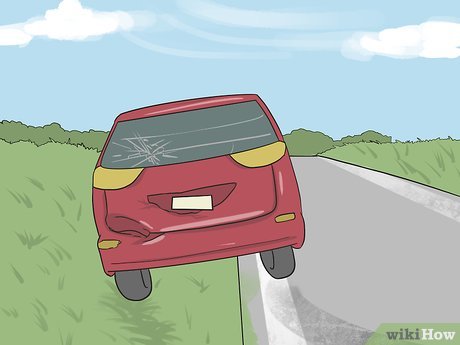
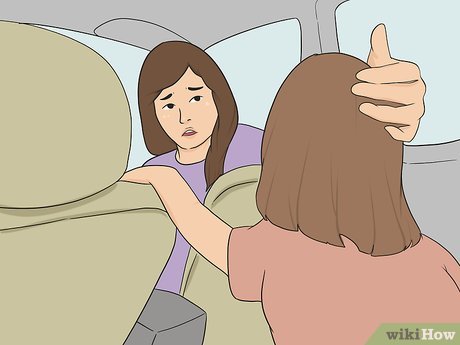

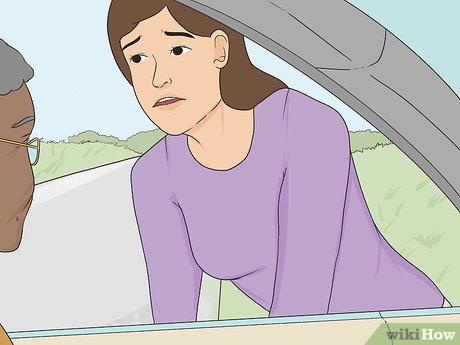
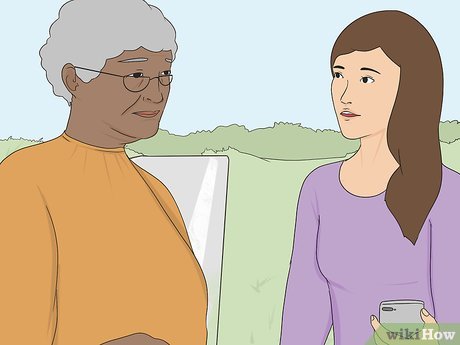
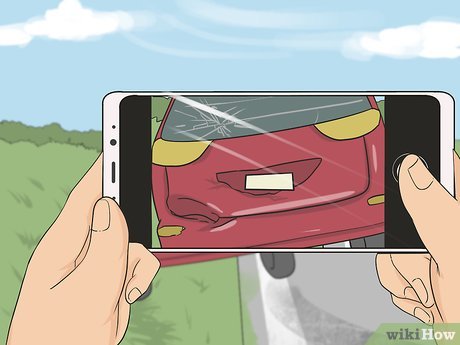
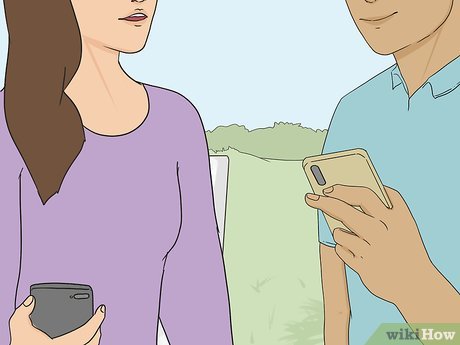
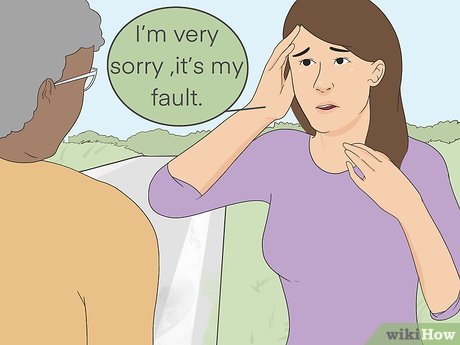
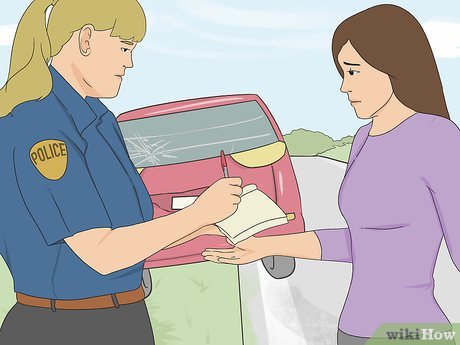
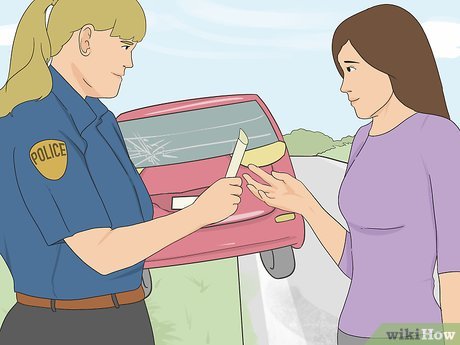
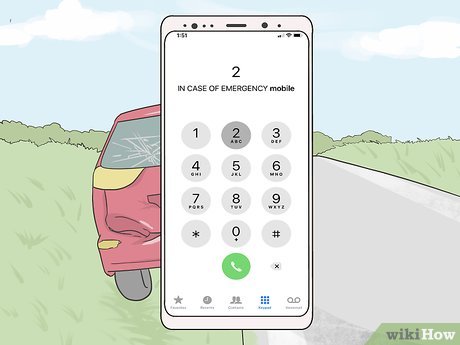
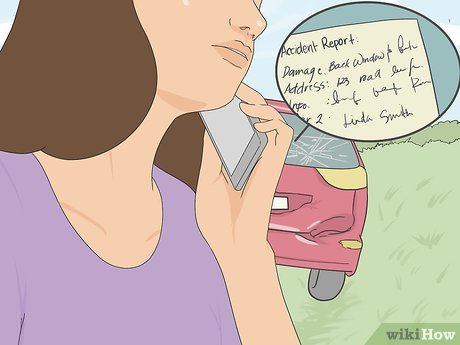
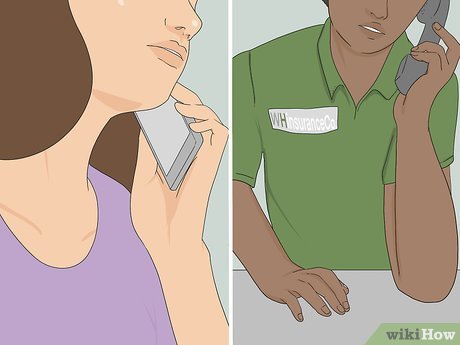
 How to Handle Yourself After a Motorcycle Accident
How to Handle Yourself After a Motorcycle Accident How to Survive a Motorbike Crash
How to Survive a Motorbike Crash How to Make an Accident Report
How to Make an Accident Report How to Report an Accident to Insurance
How to Report an Accident to Insurance How to Survive a Car Accident as a Pedestrian
How to Survive a Car Accident as a Pedestrian How to Act After a Car Accident
How to Act After a Car Accident